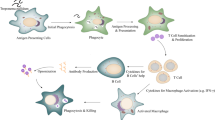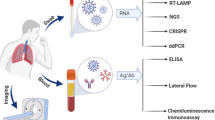Abstract
Tuberculosis control relies on the identification and preventive treatment of people who are latently infected with Mycobacterium tuberculosis (Mtb). PE/PPE proteins have been reported to elicit CD4 and/or CD8 responses either in the form of whole recombinant proteins or as individual peptides. Very few of the PE and PPE proteins have been previously tested for responses in patients with TB and healthy donors. This is the first study to evaluate the Interferon Gamma Release Assay (IGRA) after stimulation with PE35 and PPE68. The antigenspecific levels of IFN-γ following stimulation with QuantiFERON-TB gold in-tube (QFT-G-IT) antigens, and PE35 and PPE68 recombinant proteins were evaluated in 79 children and 102 adults, respectively. Using QFT-G-IT kit, latent tuberculosis infection (LTBI) was detected in 26 children (33%) and 41 adults (40%); IGRA following stimulation with PE35 and PPE68 recombinant proteins, was positive, respectively, in 36 (46%) and 32 (40.5%) children, respectively. In addition, 53 adults (52%) had positive results following stimulation with these two proteins. The sensitivity and specificity ofIGRAfollowing stimulation with recombinant PE35 in children were76%and 80%, and following stimulation with recombinant PPE68 in this group, it was 73% and 75%, respectively. Meanwhile, there is no gold standard test for LTBI. Our designed tests using PE35 and PPE68 PE/PPE proteins, two PE/PPE proteins not present in BCG vaccins, which elicit CD4 and/or CD8 responses, might be helpful for rapid diagnosis of TB and improve the detection of LTBI. However, further validation studies to determine the advantage of IGRAs using these proteins, alone or combined, are highly recommended.
Similar content being viewed by others
References
Pourakbari B, Mamishi S, Mohammadzadeh M, Mahmoudi S. First line anti-tubercular drug resistance of Mycobacterium tuberculosis in Iran: a systematic review. Front Microbiol 2016; 7: 1139.
Sayes F, Pawlik A, Frigui W, et al. CD4+ T cells recognizing PE/PPE antigens directly or via cross reactivity are protective against pulmonary Mycobacterium tuberculosis infection. PLoS Pathog 2016; 12: e1005770.
Mahmoudi S, Mamishi S, Pourakbari B. Potential markers for the discrimination of active and latent tuberculosis infection: moving the research agenda forward. In: Tuberculosis, www.smgebooks.com.
Mamishi S, Pourakbari B, Marjani M, Mahmoudi S. Diagnosis of latent tuberculosis infection among immunodeficient individuals: review of concordance between interferon-γ release assays and the tuberculin skin test. Br J Biomed Sci 2014; 71: 115–24.
Barcellini L, Borroni E, Brown J, et al. First independent evaluation of QuantiFERON-TB Plus performance. Eur Respir J 2016; 47: 1587–90.
Pourakbari B, Mamishi S, Marjani M, Rasulinejad M, Mariotti S, Mahmoudi S. Novel T-cell assays for the discrimination of active and latent tuberculosis infection: the diagnostic value of PPE family. Mol Diagn Ther 2015; 19: 309–16.
Fishbein S, van Wyk N, Warren RM, Sampson SL. Phylogeny to function: PE/PPE protein evolution and impact on Mycobacterium tuberculosis pathogenicity. Mol Microbiol 2015; 96: 901–16.
Copin R, Coscollá M, Seiffert SN, et al. Sequence diversity in the pe_pgrs genes of Mycobacterium tuberculosis is independent of human T cell recognition. mBio 2014; 5: e00960–13.
Sampson SL. Mycobacterial PE/PPE proteins at the host-pathogen interface. Clin Dev Immunol 2011; 2011: 497203.
Mahmoudi S, Mamishi S, Ghazi M, Hosseinpour Sadeghi R, Pourakbari B. Cloning, expression and purification of Mycobacterium tuberculosis ESAT-6 and CFP-10 antigens. Iran J Microbiol 2014; 5: 374–8.
Aida Y, Pabst MJ. Removal of endotoxin from protein solutions by phase separation using Triton X-114. J Immunol Methods 1990; 132: 191–5.
Youden WJ. Index for rating diagnostic tests. Cancer 1950; 3: 32–5.
Yoshiyama T, Harada N, Higuchi K, Sekiya Y, Uchimura K. Use of the QuantiFERON®-TB Gold test for screening tuberculosis contacts and predicting active disease. Int J Tuberc Lung Dis 2010; 14: 819–27.
Chiappini E, Bonsignori F, Accetta G, et al. Interferon-γ release assays for the diagnosis of Mycobacterium tuberculosis infection in children: a literature review. Int J Immunopathol Pharmacol 2012; 25: 335–43.
Cerezales MS, Benítez JD. Diagnosis of tuberculosis infection using interferon-γ-based assays. Enferm Infecc Microbiol Clin 2011; 29: 26–33.
Mamishi S, Pourakbari B, Marjani M, Bahador A, Mahmoudi S. Discriminating between latent and active tuberculosis: the role of interleukin-2 as biomarker. J Infect 2015; 70:429.
Mamishi S, Pourakbari B, Teymuri M, et al. Diagnostic accuracy of IL-2 for the diagnosis of latent tuberculosis: a systematic review and meta-analysis. Eur J Clin Microbiol Infect Dis 2014; 33: 2111–9.
Diel R, Goletti D, Ferrara G, et al. Interferon-γ release assays for the diagnosis of latent Mycobacterium tuberculosis infection: a systematic review and meta-analysis. Eur Respir J 2011; 37: 88–99.
Mamishi S, Pourakbari B, Shams H, Marjani M, Mahmoudi S. Improving T-cell assays for diagnosis of latent TB infection: confirmation of the potential role of testing interleukin-2 release in Iranian patients. Allergol Immunopathol (Madr) 2016; 44: 314–21.
Hoffmann H, Avsar K, Göres R, Mavi SC, Hofmann-Thiel S. Equal sensitivity of the new generation QuantiFERON-TB Gold plus in direct comparison with the previous test version QuantiFERON-TB Gold IT. Clin Microbiol Infect 2016; 22: 701–3.
Author information
Authors and Affiliations
Corresponding author
About this article
Cite this article
Mahmoudi, S., Pourakbari, B. & Mamishi, S. Interferon Gamma Release Assay in response to PE35/PPE68 proteins: a promising diagnostic method for diagnosis of latent tuberculosis. Eur Cytokine Netw 28, 36–40 (2017). https://doi.org/10.1684/ecn.2017.0391
Accepted:
Published:
Issue Date:
DOI: https://doi.org/10.1684/ecn.2017.0391




